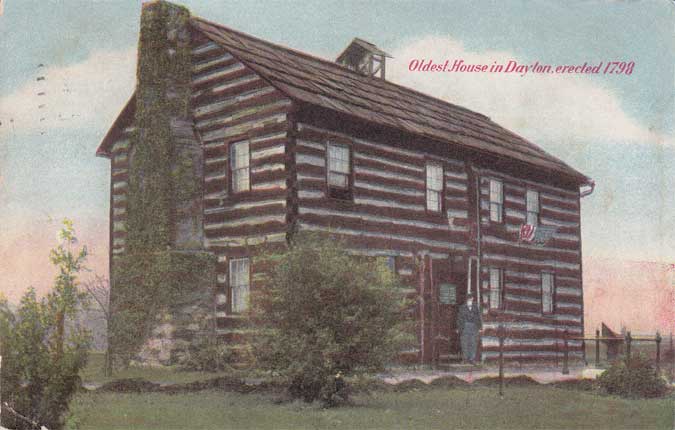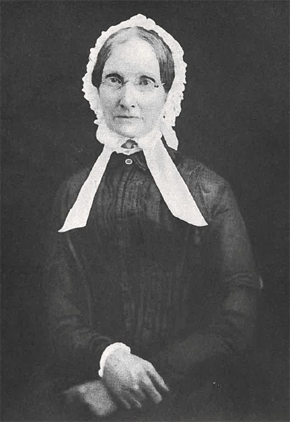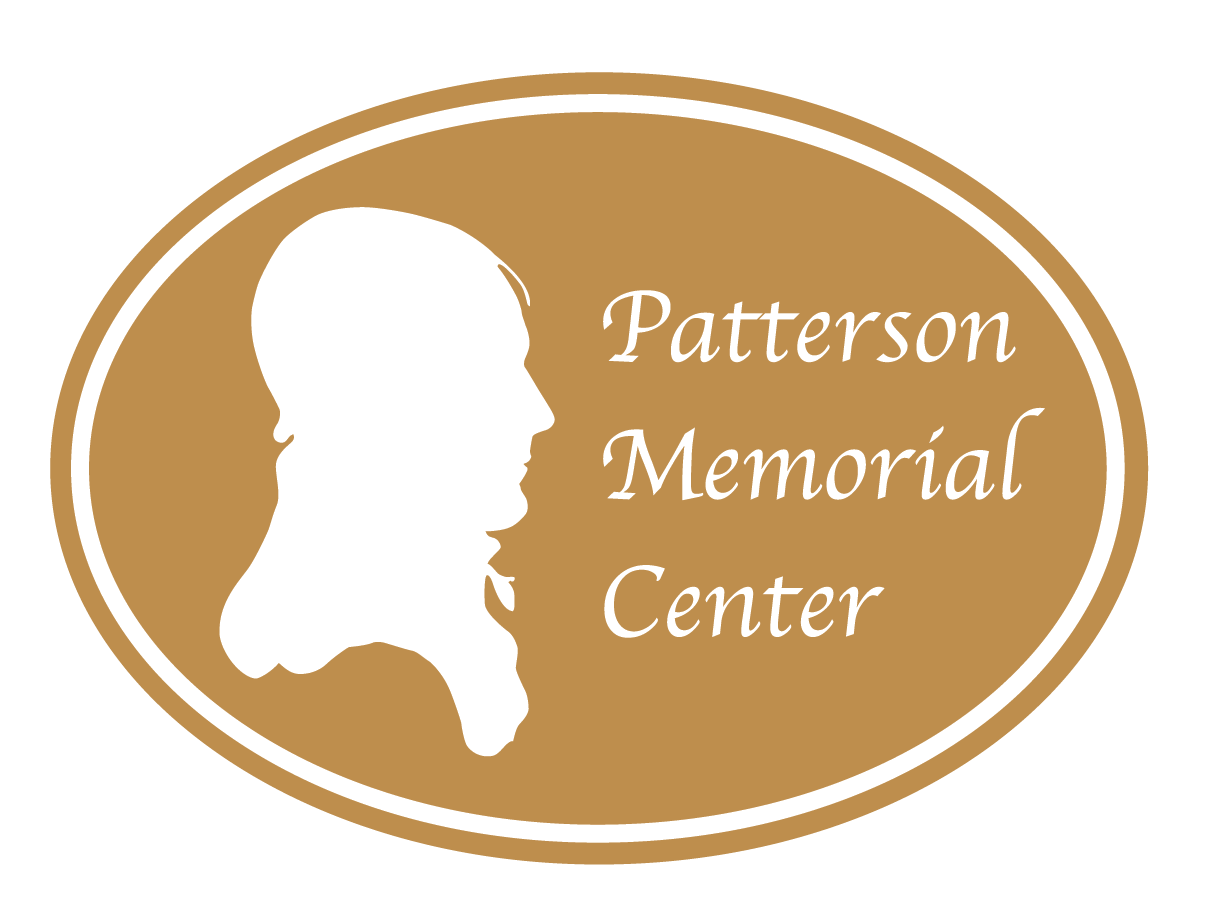
Catherine "Kitty" Patterson was born in Lexington, Kentucky, on March 17, 1793. She was the fourth daughter and fifth child of Colonel Robert Patterson and Elizabeth Lindsay Patterson.
Robert Patterson was well-known as the founder of Lexington and co-founder of Losantiville, now Cincinnati. He was an American Revolutionary War hero, Indian fighter, and surveyor of much of the land that would become the Northwest Territory.
LINK TO ENDNOTE: What was the Northwest Territory?
By the time of Kitty's birth, the "Indian" wars in the Kentucky Territory were over; the white settlers no longer lived in fear of the fighting that plagued the area since settlement began in the late 17th Century.
Kitty was raised in this environment of peace and growth. Fortunately, she wrote down many of her experiences growing up, offering a remarkable first-hand account documenting those early times.
Kitty and her siblings attended school in winter and helped with the housework, as well. In summer, the Patterson children helped maintain the crops.
Despite the relative calmness of this period, excitement occurred when a wildcat wondered into the one-room log schoolhouse in Lexington and attacked the teacher, John McKinney. Fortunately, Mr. McKinney, later referred to as "Wildcat" McKinney, was able to fight him off.
LINK TO ENDNOTE: Who were the Patterson children?
Many of the products grown on the Patterson farm, such as flax and hemp from plants, and wool from sheep, were used to make clothing. The older sisters were taught to spin flax, hemp, and wool into thread; the thread was then woven or knitted into cloth to make clothing.
The Pattersons had many social activities. They often entertained guests in their home as there were few public taverns. Their guests might include friends, relatives from the East-coast states, or various important state and military officials. A model of active hospitality became well established.
A bad decision to secure a loan for a friend in 1799 resulted in Robert losing his Kentucky property. With nine children to support and plenty of available, inexpensive land in Ohio, he decided to move.
Robert's military campaigns had impressed him with the fertility of the land in Ohio. In 1803, he purchased Daniel Cooper's 1,000-acre farm, a mile south of Dayton.
The Patterson family moved from Lexington to Dayton in the fall of 1804. They named the farm, "Rubicon."
The previous owner, Daniel Cooper, had built a large, two-story log house that provided plenty of room for the large Patterson family. Cooper had also built both a saw mill and grist mill on the property.
In winter, Kitty and her siblings attended school classes in Newcom's Tavern, over a mile away. The tavern served multiple purposes – tavern, church meetinghouse, schoolhouse, courthouse, and jail.

In the warmer months, the Pattersons visited friends and hosted many friends at Rubicon Farm. Kitty had her own saddle-horse and rode to visit her married, older sister Elizabeth Nisbet near Twin Creek (now in Preble County, where the Nisbet homestead still stands) as well as friends in surrounding neighborhoods.
Henry Brown
Henry was born near Wood's Creek (now Lexington), Virginia, on May 8, 1772.
In 1793, Henry moved to the Northwest Territory to support General Anthony Wayne. Wayne was in Cincinnati preparing to confront the Native Americans conducting raids on territorial settlers.
Following the Treaty of Greenville, which resulted in peace with the Native Americans, Henry and John Sutherland opened a trading post at Fort Hamilton to trade with the Native Americans.
Before settlers first arrived in Dayton (1796), Henry operated a small trading post at the confluence of the Mad and Miami Rivers, just downstream from its junction with the Stillwater River.
With business increasing, Henry opened a larger store in Dayton in 1804. It was located on the east side of Main Street, south of the riverfront on Water Street (now Monument Avenue).
Henry built Dayton's first brick residence in 1808 on the west side of Main Street. When he married Kitty, Henry refurbished his brick house, and built a new smokehouse, cellar, and kitchen.

Kitty and Henry Brown
Kitty first mentions Henry Brown in a letter, "I remember in 1809 or 1810 riding in a party to a large Indian camp on the Military road along Stillwater [River], somewhere near Ludlow Falls. Mr. Henry Brown carried dress goods, blankets, bridles, saddles, axes, kettles and other government annuities on a hundred pack-horses for distribution among the Wabash Indians" (From the letters of Catherine P. Brown, Conover, 1914, p. 15).
Kitty and Henry became engaged in 1810. Henry likely knew Kitty before 1809 as both Henry and the Patterson family moved to Dayton in 1804.
Henry likely wore his best clothes when he married Kitty in her wedding dress of Quaker-gray silk on February 19, 1811. They were married in the Patterson log house on the Rubicon Farm. The Rev. James Welch of the First Presbyterian Church officiated.
Henry and Kitty had five children, three of whom lived to adulthood.
LINK TO ENDNOTE: Who were the Brown children?
LINK TO ENDNOTE: Read about the marriages of the Brown children!
Although the Revolutionary War ended in 1783 with the Treaty of Paris, the British maintained a presence around the Great Lakes as they still controlled Canada.
The British supported the various Native-American tribes who lived there and promised to aide their efforts to curb the influx of white settlers.
In 1810, the rapid influx of white settlers into Ohio resulted in increased hostilities with the Native Americans.
As the danger to traders increased, Sutherland and Brown withdrew their agents, and dissolved their partnership in June 1812. Henry then moved his inventory of goods to the north room of his and Kitty's residence, and continued business there.
With the War of 1812, Henry became a government agent in charge of Indian supplies. He worked under the direction of Indian Agent for the Shawnee (later, Agent for all Ohio Indians), Colonel John Johnston in Piqua.
Kitty joined her mother, Elizabeth, and women across Montgomery County in contributing to the war effort by making clothing for the American soldiers. The women were able to produce 1,800 shirts within a month.
The women not only sewed clothing for the soldiers, but for the soldiers' families as well. This association of women led to the formation of the Dayton Female Charitable and Bible Society in 1815. This is considered to be the first woman's organization in Dayton.
Following the war, Kitty continued in her charitable works and was active in the First Presbyterian Church, forerunner of today's Westminster Presbyterian Church in Dayton.
Henry continued to prosper as a merchant and, like Robert Patterson, promoted the general welfare of Dayton through improved transportation, with road building and the construction of a canal to eastern markets.
On May 19, 1823, Henry died following a lingering illness. He was originally buried in the old graveyard on Fifth Street and later moved to the Brown vault in Woodland Cemetery in Dayton. At 30 years old, Kitty was a widow.

Marriage to Andrew Irwin
In 1826, with three young children to support, Kitty married Andrew Irwin, a dry-goods merchant in Dayton. Kitty and Andrew had one son, Andrew Barr Irwin, born on March 23, 1827.
In September 1827, Andrew died from a fever, leaving Kitty a widow again.
Horatio G. Phillips
Horatio Gates Phillips was born on December 21, 1783, in Trenton, New Jersey. He moved to Dayton in 1805 with his first wife, Eliza Smith Houston Phillips, and became a successful merchant.
During the War of 1812, Horatio supplied merchandise to government agents who were buying supplies for the Army.
Like Robert Patterson and Henry Brown, Horatio was interested in connecting local towns and developing routes to markets in the East. He supported the development of the canal, turnpikes, and, later, railroads.
Horatio's first wife, Eliza, was a founding member of the Dayton Female Charitable and Bible Society. Horatio and Eliza had several children, three of whom lived to adulthood. Eliza died in 1831.
Marriage to Horatio G. Phillips
On December 16, 1836, Kitty married for a third time to Horatio G. Phillips.
After Kitty married Horatio, they moved into a home on the southeast corner of Main and Second Streets, where his residence and store were located. Kitty and Horatio did not have any children.
Charitable Works
During her marriage to Horatio, Kitty was involved with many charitable efforts. In addition to the Dayton Female Charitable and Bible Society, she played a role in establishing an orphan asylum in 1843.
After Montgomery County took over the care of orphans, Kitty was involved with establishing the Relief Union that converted the former orphan asylum into a widow's home.
During the Mexican-American War (1846 — 1848), Kitty and Horatio supported the families of volunteer soldiers from Dayton and Montgomery County. Because of their work with charitable causes, the Phillips House Hotel was named in their honor when it opened in 1852, and Horatio and Kitty were the guests of honor at the opening ball.
After the Phillips House Hotel opened, Horatio and Kitty made it their residence until Horatio’s death on November 10, 1859. He was buried with his first wife, Eliza, at Woodland Cemetery. Kitty was a widow for the third time.
After Horatio's death, Kitty continued to support charitable causes, and spent much of her time writing letters, and dispensing advice to her children and grandchildren.
Catherine "Kitty" Patterson Brown Irwin Phillips died on August 12, 1864, and was buried in the Brown family vault with her first husband, Henry Brown, and second husband, Irwin Andrews.

ENDNOTE - What was the Northwest Territory?
The U.S. Congress established the Northwest Territory in 1787 that included land west of Pennsylvania, north of the Ohio River, east of the Mississippi River, and south of the Great Lakes. The Native Americans, French, and British all claimed this land at some point, with the British holding the land at the beginning of the American Revolution. The British ceded the land to the United States at the Treaty of Paris that ended the American Revolutionary War. However, the Native Americans did not relinquish their claim to this land until the Treaty of Greenville (1795), which followed the Battle of Fallen Timbers (1794) where the natives were defeated. The Northwest Territory, once settled, would include Ohio, Indiana, Illinois, Michigan, and Wisconsin.
ENDNOTE - Who were the Patterson children?
Robert and Elizabeth had 11 children, 9 of whom lived to adulthood. They were:
* Dayton historian, Charlotte Reeves Conover, in Concerning the Forefathers (1902), suggests that the stress of living under the threat of Native-American attack, newness of being a mother, as well as primitive living conditions, including inadequate nutrition, with respect to Elizabeth, may have played roles in the death of the infant sons (pp. 232). (See also Conover, 1902, pp. 276-277)
All of the latter nine Patterson children lived to adulthood. More information about them can be found in the Wright State University Special Collections and Archives.
ENDNOTE - Who were the Brown children?
Henry and Kitty Brown had five children, three of whom lived to adulthood. They were:
ENDNOTE - Read about the marriages of the Brown children!
Marriages of the Brown children:
A History of Montgomery County, Ohio. (1882). Chicago: W. H. Beers.
The Holy Bible: Containing the Old and New Testaments. (1853). Philadelphia: E. H. Butler & Co. [Henry L. Brown Family Bible].
Centenary Souvenir: Commemorative of the Completion of a Century by the First Presbyterian Church of Dayton, Ohio. (1900). Dayton, OH: United Brethren Publishing House.
Conover, C. R. (1902). Concerning the Forefathers: Being a Memoir, with Personal Narrative and Letters of Two Pioneers, Col Robert Patterson and Col John Johnston. New York: Winthrop Press.
Conover, C. R. (Ed). (1914). A Memoir: With Letters, of Mrs. Horatio G. Phillips, "Kitty" Patterson, A Pioneer Woman. N.C.R. Co. Press: Dayton, OH.
Conover, C. R. (1932). Dayton, Ohio: An Intimate History. Landfall Press: Dayton, OH.
Edgar, J. F. (1896/2008). Pioneer Life in Dayton [Ohio] & Vicinity, 1796 — 1840. Westminster, MD: Heritage Books.
Keifer, J. W. (2004). Civil War Regiments from Ohio. eBooksOnDisk.com [Originally published by the Federal Publishing Company]
Knepper, G. W. (1989). Ohio and its People. Kent, OH: The Kent State University Press.

Do you have photos, books or other information that you believe may be pertinent to this website?
Are you interested in contributing to our organization?
